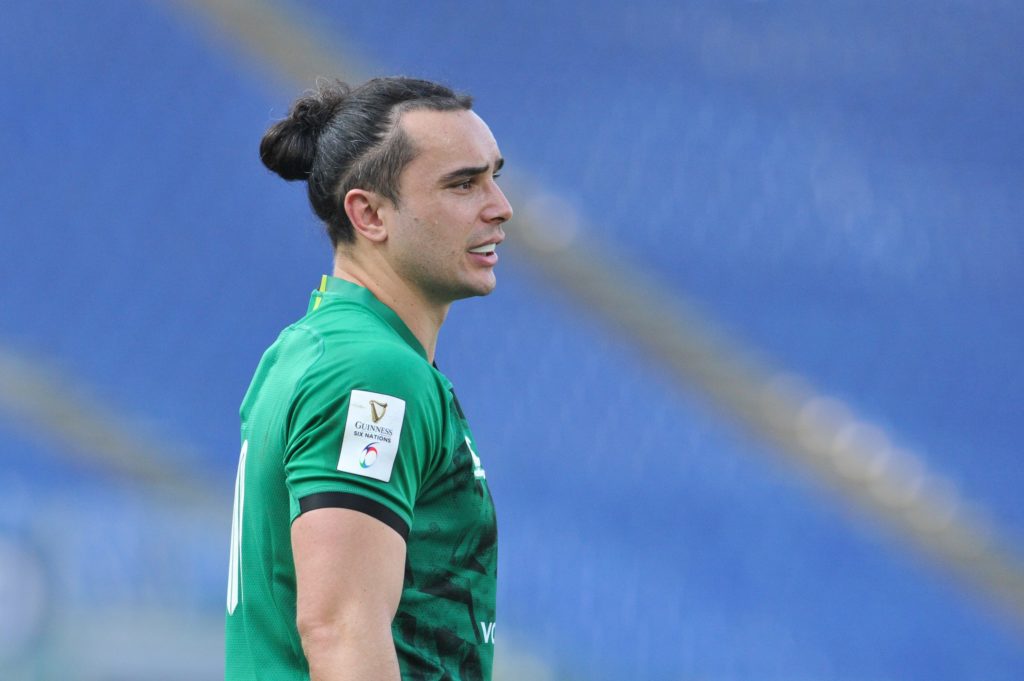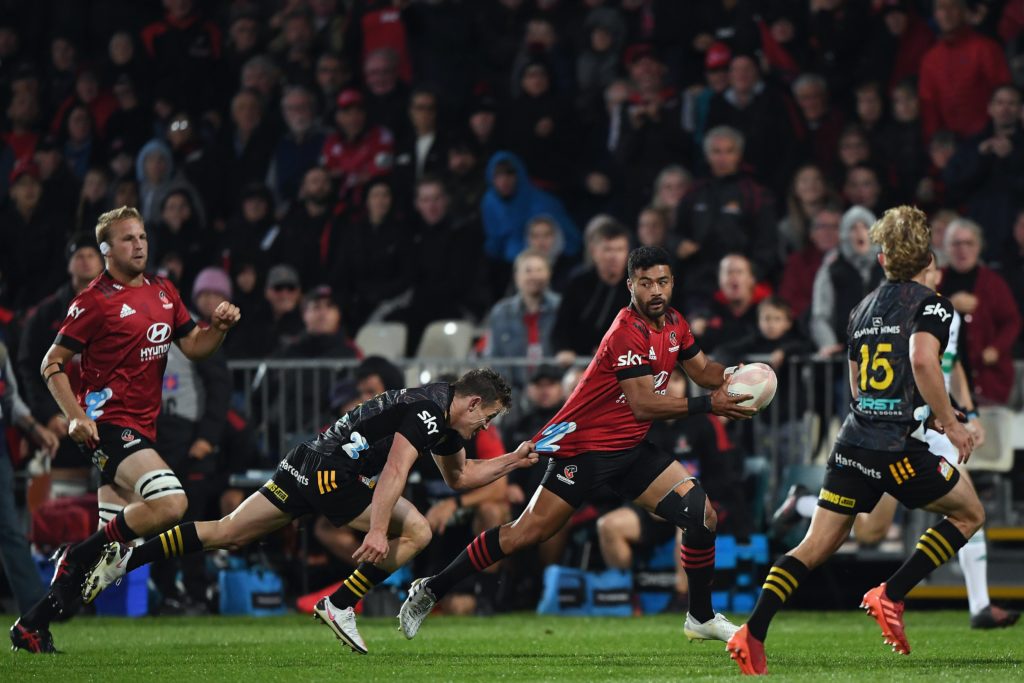Ronan O’Gara, inadvertently perhaps, has hit on something with his suggestion that Super Rugby has an 80 per cent focus on attack, whereas in the Northern Hemisphere, there is a 50 per cent emphasis on defence.
The former Irish international is well placed to make such an observation having coached for two years at the champion Crusaders in 2018 and 2019– a period in which he played a critical role in delivering successive Super Rugby titles as assistant to Scott Robertson.
What sparked O’Gara to make his observation public was the performance of former Chiefs wing James Lowe for Ireland against Scotland in the Six Nations. Lowe had a troubled afternoon on defence in a game that was slow and riddled with contestable kicks.
“Over here I think our understanding of the defence and how we set up to succeed defensively is 50/50,” said O’Gara .
“In Super Rugby it is 80/20. You spend 80 per cent of your time on attack, it’s an entertainment business and it’s all about scoring tries.
“I think he has to understand and appreciate that here is it is 50/50. The most you can get out of 10 if you are not interested in defence is a five. This side, we really appreciate guys who are good on both sides of the ball.”
O’Gara’s point, albeit a touch exaggerated, is largely true and goes some way to explaining why rugby in the North can often look like an entirely different game to the one played in the Southern Hemisphere.

New Zealanders can appreciate a player’s defensive qualities. The art of defending is not anathema to the rugby-following public and no one can survive in Super Rugby if they can’t tackle or are hopeless without the ball.
But New Zealand’s talent identification system rarely, if ever, promotes players whose game is mostly built on their defensive prowess. No one it seems can make it to the professional ranks if defence is their strongest suit: the balance always has to be in favour of what they bring to the attack.
Go through all five Super Rugby teams and there isn’t a player to be found whose defensive qualities outweighs their attacking contribution. There simply isn’t anyone contracted on the basis they are a beast on defence and that’s predominantly what they offer.
O’Gara is right that everything in New Zealand is geared towards attacking. There has, as the XV revealed, been a shift in emphasis towards greater line speed and aggressive defensive patterns in the last few years, but not so much as to rewrite the core dynamic of what the game in this part of the world is all about.
Most teams in New Zealand are now closing down space faster and making life harder for the ball players and decision-makers, but it’s still an attacker’s game. It’s still a competition where teams are playing to create space, score tries and use the ball.
There are rarely, if ever, high attrition penalty-fests or even games where the respective first-fives will kick more than they pass and run.
Super Rugby remains a place where runners can run and be celebrated for doing so. Players are judged for what they do with the ball rather than what they do without it and as a result there is arguably greater ability for Super Rugby to accommodate smaller, exciting athletes.
The XV ran a statistical analysis piece on Damian McKenzie recently which showed how his influence has been blunted in recent seasons as a result of the trend towards using defensive line speed.
New Zealand’s talent identification system rarely, if ever, promotes players whose game is mostly built on their defensive prowess. No one it seems can make it to the professional ranks if defence is their strongest suit: the balance always has to be in favour of what they bring to the attack.
The thing not to be missed, however, is that McKenzie remains a cherished part of the New Zealand rugby landscape and it is worth asking whether, at 1.77m and 79kg, he could have made it into England or Ireland’s national team had he been born there?
In New Zealand, McKenzie is a cult figure, recognised as one of the best ball runners and defence breakers in the game and yet, possibly had he grown up in the Northern Hemisphere, he’d never have made it out of club rugby.
The All Blacks have been prepared to trade what he offers in attack for the defensive frailties with which an athlete of his reduced size inevitably comes. McKenzie is brave, fearless even, on defence, but the physics of him hitting men sometimes 30kg heavier means he’s often steam-rolled.
In contrast, England dropped Elliot Daly from their starting XV for the recent crucial clash against France in the Six Nations. Daly, a smooth-running, clever attacking player, was deemed to be making too making too many defensive errors.
Go through the backlines of Super Rugby teams in New Zealand and O’Gara’s statement holds true across the board. Selection is determined almost exclusively by what players bring on attack.
Etene Nanai-Seturo, Caleb Clarke, Mark Telea, Leicester Fainga’anuku, Sevu Reece, Julian Savea, Wes Goosen, Conor Garden-Bachop all win regular starts on the basis they are massive attacking threats.
If they miss the odd tackle or drop the occasional high ball, no one would particularly care. Poor defence is not encouraged or endorsed, but no one expects these players to bring a wow factor when they don’t have the ball.

Their performances are judged, almost exclusively, on what they do with the ball – how they use it, how they beat defenders, finish moves or create space for others. That’s their world because in New Zealand the mind-set is always about outscoring the opposition rather than trying to contain them.
Defence is part of the game, but it is not obsessively practised or deemed to be the means by which big games and titles can be won.
New Zealand teams see the world through an entirely different lens to those in the North, and perhaps that’s most apparent in the type of No 10s that thrive in Super Rugby compared with those who tend to dominate the Six Nations.
A fly-half in New Zealand will be judged primarily by the quality and impact of their running game. The game-plan is almost exclusively run first and everyone is looking for a devastating line breaker in their No 10 jersey.
This is how it has been in New Zealand since Andrew Mehrtens replaced Grant Fox in the All Blacks in 1995. Mehrtens could kick and control a game with his boot, but he was blindingly quick, and naturally inclined to run.
A fly-half in New Zealand will be judged primarily by the quality and impact of their running game.
He battled with the brilliant Carlos Spencer for game time – the latter being one of the most elusive runners and creative players the world has known. Spencer was never going to be the man to kick the All Blacks to a 10-9 victory in the mud, but stick him on a fast track, with a dry ball and he’d conjure miracle tries.
Daniel Carter was essentially a running fly-half, too, until injury took some of that from him. But even in 2015, when he was mostly using his astute game management to steer the All Blacks through the World Cup, he was still capable of making searing breaks.
Now, the All Blacks have the two best running fly-halves in world rugby – Beauden Barrertt and Richie Mo’unga. Both are electric, prolific try-scorers and almost the antithesis of the likes of Owen Farrell and Johnny Sexton.
Barrett has scored 36 test tries and could incredibly end his career as the highest all time try-scorer in All Blacks history.
As Jeremy Guscott observed a few years ago: “The game New Zealand play is all-court across the pitch, but what a running fly-half gives you is another attacking dimension because they will always attract two or more defenders.
“That is the New Zealand way, but in England it is a different fly-half culture. The Premiership is about survival whereas Super Rugby is not. The main requirements from a 10 at top English clubs is fundamentally to keep his side going forward by gaining territory and not taking unnecessary risks, and to keep the scoreboard ticking over with high percentage goal-kicking.”



Comments
Join free and tell us what you really think!
Sign up for free